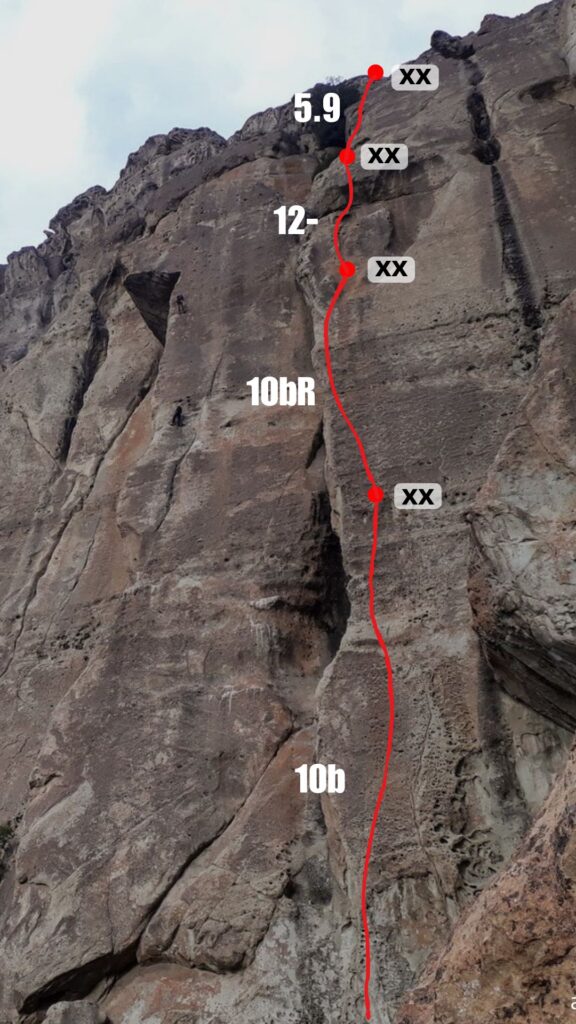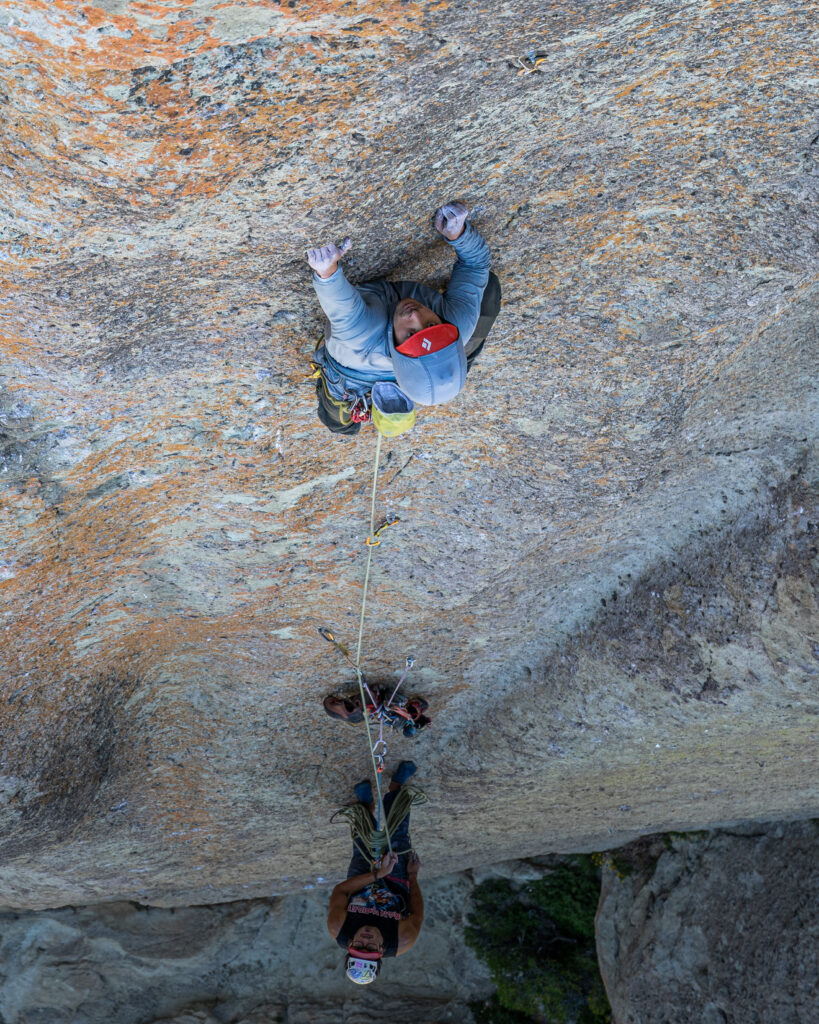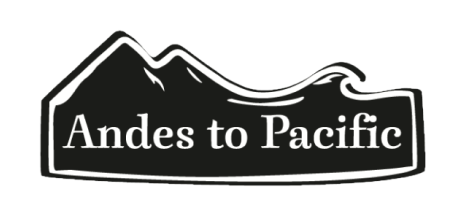When we were bolting "Dueños de Nada," we couldn't avoid to notice another line just to the left of "Tripi para Dos (upper part)." There was a small roof with a beautiful, vertical slab underneath.
Having finished bolting the previous route, Alex and I decided to go up again with a drill and bolts to check out and equip the line, which we later named "Plan D." We rappelled in from above to inspect the line and fixed ropes down to the first pitches of "Tripi." As we started checking it out and testing it on solo top rope, we realized the route was beautiful—it had to be equipped!
We cleaned the route thoroughly and then started testing all the pitches on solo top rope to make sure it didn’t merge with "Tripi" and wasn’t a forced line. It turned out there was a really good and independent line that led directly to the roof we wanted to reach. Then we began working on the roof, which at first seemed impossible, but we discovered it could be done with a huge dyno to a jug. It was incredible to have to pull off a dyno on a third pitch, with so much exposure and verticality beneath our feet. That day, we finished placing the bolts and left it at that.
A few months later, we told Gabriel from Crux (Gabo) about this route, and he got stoked on the idea of freeing it and capturing some good photos. The three of us—Gabo, Alex, and I (Alan)—headed out. Gabo fixed the ropes for the photos, and Alex and I did rock-paper-scissors to decide who would take on the roof pitch first. Unfortunately for me, Alex won, haha. So, I started by leading the second pitch, a 5.10bR that had all the classic Torrecillas style—slab, runouts, delicate balance moves, and full trust in your feet. A really good pitch! Even though it’s "easy" compared to the 5.12b ahead, it forces you to be precise and confident in your movements. Then it was Alex’s turn for the crux pitch! He tried it statically, then dynamically, taking some good falls in the process. When my turn came, I reached the roof and saw a huge move where my height didn’t help much, haha. I tried multiple times, using intermediates and going for dynos, but I couldn’t stick the move. So, we had to call in help from the cameraman, haha. Gabo got on and gave it several burns, but he also couldn’t connect that crucial move at the roof. So, for the moment, we had to leave it unfinished. The challenge of unlocking that move led us to name the route "Plan D"—since it wasn’t plan A, B, or C… it was Plan Dinámico!
Later on, Manri, a great friend and client of Andes to Pacific, reached out to me. We had done some guided trips together in Torrecillas and Palestras the previous year. He told me he had fallen in love with Cajón del Maipo and wanted to return to Chile to take a traditional climbing course with me, along with his friend Jonas
When we did the traditional climbing course, I told this Tico team about the route, and without much hesitation, they got stoked to try and free it. I mentioned that I had a guided trip to Torrecillas with Mati, another great friend and client of Andes to Pacific, and I offered to guide them up to Torrecillas and show them the line. The Ticos went for it and put up a great fight under the sun to free the route. Mati and I had already descended, but we could still hear their shouts echoing through the valley as they gave it everything, battling to send the roof.
Later, I got a message from Manri: “We freed the route! First free team ascent—Tico style!” He told me that after many attempts, Jonas finally found the beta to unlock the crux, and then Manri gave the final, send-go to complete it. They were stoked—“with the cup overflowing,” as Manri liked to say, haha. They headed back to Costa Rica with new trad climbing skills and a FFA in Torrecillas under their belts.

While all this was happening, there were also two Catalans staying up in Torrecillas—Pau, whom I had met in Cochamó that summer, and his climbing partner, Geri. When Mati, the Tico team, and I hiked up, we ran into them on the trail, and I told them about the route. A few days later, they also went to climb it and managed to send it, claiming the second free ascent. So far, we don’t know if anyone else has freed it, but everyone who has climbed it has told us how much they loved the route.
Here is some information about the pitches of the route

Pitch 1 (5.10b 25m): First pitch of Tripi para 2 superior
Pitch 2 (5.10bR 30m): It uses the first three bolts of the second pitch of Tripi para Dos, then veers left onto a beautiful, sustained slab tinted with orange lichen. This pitch is a bit psychological, ending at the base of a wide chimney.
Pitch 3 (5.12- 20m) : The money pitch! The one that gives the route its name. A well-protected pitch that starts on the left side of the chimney with a couple of delicate moves, leading into a roof with a super fun crux. It's the most beautiful pitch of the route. It’s recommended to place a runner on the bolt before the roof. If the move can’t be done free, it can be easily aided at A0.
Pitch 4 (5.9 45m) This pitch follows a fairly direct line toward the upper terrace, featuring a couple of friction moves and finishing with easy climbing up to the belay. From here, you can either hike out or choose to climb one more pitch to the summit. It can be linked with the final pitch of Dueños de Nada, which is one of the most obvious exits to the summit.
If you wanna rappel down, go by Adan y Eva ( right anchor)




